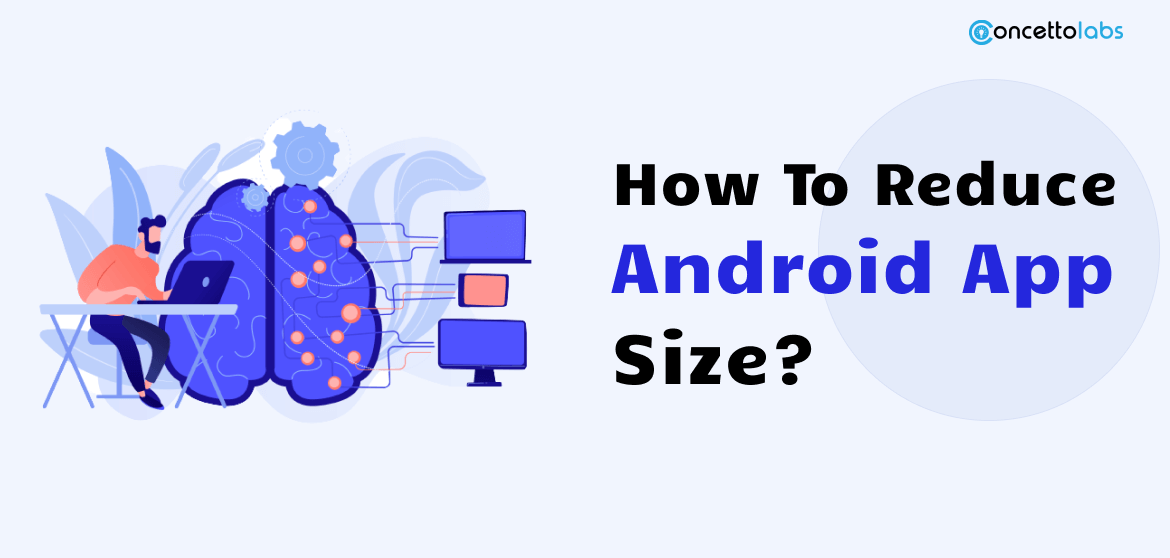
The need for high-caliber mobile apps has increased as mobile devices take on more significance in our daily lives. Yet the size of these apps is also beginning to be a big problem, especially for people who have little capacity on their devices. The efficiency of the app and the overall user experience can both be impacted by a big app size. This post will go over how to reduce Android app size and run better.
Don’t Let Your Application Size Hold You Back – Get started with These Simple Size-Reduction Tips Today!
Contact Us Today!Why is App Size Important?
App size plays a crucial role in the success of an Android app. The larger the app size, the longer it takes to download, install, and start. This can lead to higher bounce rates, fewer downloads, and lower user engagement. A large app size can also impact the performance of the app, causing it to run slowly or crash frequently. This can result in negative reviews and a decrease in user satisfaction. Hire Android App Developers Now! Get the most innovative and user-friendly Android applications for your business. Click the button below to start your journey to a successful mobile app.
Tips to Reduce Android App Size
1. Reduce the Number of Libraries and External Dependencies
Libraries and external dependencies can significantly increase the size of an Android app. It’s important to minimize the number of libraries and dependencies included in the app. In addition, ensure that the libraries and dependencies used are the latest versions and are optimized for size.
2. Use ProGuard to Minimize the Size of Code and Resources
ProGuard is a tool that optimizes the size of an Android app by removing unused code and resources. This can significantly reduce android app size. To use ProGuard, enable it in the build. gradle file and configure it to remove the unused code and resources.
3. Compress Resources and Images
Images and other resources can greatly increase the size of an Android app. It’s important to compress these resources to minimize their size. There are several tools available for compressing images, such as TinyPNG, that can significantly reduce the size of the images.
4. Use Vector Graphics
Vector graphics are scalable and can be used for icons, logos, and other graphics in an Android app. Vector graphics can significantly reduce the size of the app compared to raster graphics, which are bitmap images.
5. Minimize Resource Overhead
Resource overhead refers to the size of the resources that are included in an Android app but are not used by the app. To minimize resource overhead, use the Android Lint tool to detect unused resources and remove them.
6. Use Alternative Resources for Different Screen Sizes and Densities
An Android app may include resources for different screen sizes and densities. To reduce the size of the app, it’s important to use alternative resources for different screen sizes and densities. For example, an app may use a smaller image for devices with a lower screen density, reducing application size for these devices.
7. Split the App into Multiple APKs
An Android app can be split into multiple APKs, each targeting a specific device configuration. This can significantly reduce the size of the app for each device, as only the resources and code that are needed for that device are included in the APK.
8. Use of Lint
Lint is a tool in Android Studio that analyzes the code and resources of an Android app and detects potential issues, including unused resources. To reduce the size of the app, developers can use Lint to identify and remove unused resources, reducing the app’s overall size.
9. Use images in WebP file format
WebP is a new image format that provides superior compression compared to traditional formats such as PNG and JPG. By converting images to the WebP format, developers can significantly reduce the size of the app without sacrificing quality.
10. Use the Android Size Analyzer tool
The Android Size Analyzer is a tool that provides a visual representation of the size of the different components of an Android app. Developers can use this tool to identify which components are contributing the most to the app’s size and take steps to reduce their size.
11. Generate App Bundles instead of APK
An Android app bundle is a new format that enables developers to generate multiple APKs from a single codebase, each optimized for specific device configurations. By using app bundles instead of APKs, developers can significantly reduce the size of the app for each device, as only the resources and code needed for that device are included in the APK.
12. Use of Resconfigs
Resconfigs is a new feature in Android Studio that enables developers to configure specific resources for specific configurations, such as different screen sizes or densities. By using resconfigs, developers can provide alternative resources for different configurations, reducing application size and improving its performance.

Streamline Your Android App: Cut Down on Unnecessary Size with These Expert Tips!
Talk To Our ExpertsTools and Technologies that Help Reduce Android App Size
You can reduce the size of your Android app using a variety of resources and methods. The Android SDK provides two main tools for this purpose: the Dex compiler and ProGuard.
The Dex compiler converts Java bytecode into Dalvik bytecode, which is the format used by Android devices. Java code can be compressed, optimized, and obscured with ProGuard. It can remove unused code and resources, optimize code, and rename classes and fields. Unleash Your Business Potential with the Best Android App Development Company! Get custom-made, high-performance Android applications tailored to your unique needs. Contact us today to take the first step toward a successful mobile presence.
Reasons for Reducing Your Android App Size
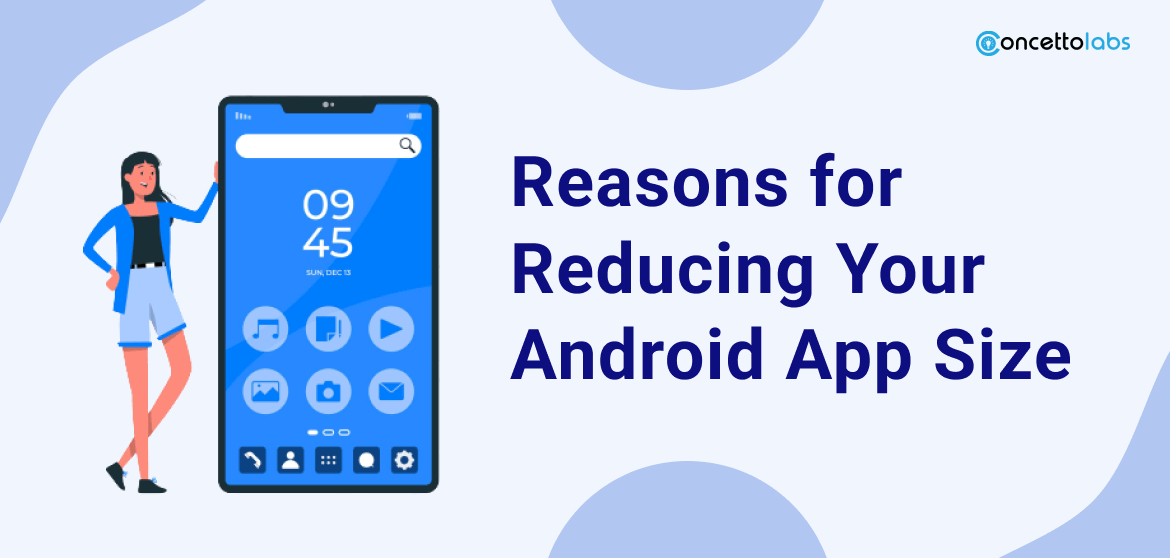
There are a number of reasons why you would want to reduce the size of your Android app.
- save space on your
- easily download and install your app.
One way to reduce android app size is to remove unnecessary files and resources. If there are images or other media files that aren’t needed by your app, consider removing them. You can also remove unused code from your app’s codebase. Doing this can help reduce the size of your compiled app significantly.
This includes using smaller image files, compressing data files, and using more efficient algorithms. These optimizations can help make your app smaller without sacrificing functionality or performance.
Finally, you can use Proguard or a similar tool to obfuscate and shrink your code. This removes unused code and renames classes and methods to shorter names, which can further reduce the size of your compiled app.
Achieving Optimal Performance with Reduced Android App Sizes
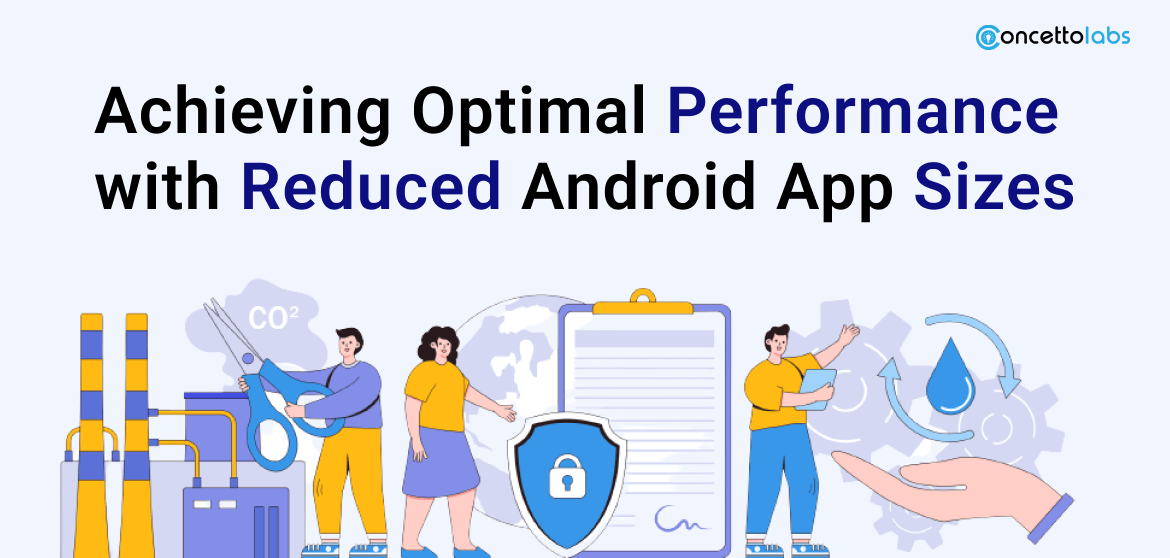
It’s crucial to minimize the size of your APK to guarantee that your software runs smoothly on all devices. There are several ways to do this, including using ProGuard or shrinking resources.
ProGuard is a tool that helps optimize and shrink your Java bytecode. It removes unused classes, fields, methods, and attributes, and obfuscates the remaining code to make it more difficult to reverse engineer.
The above configuration will keep all classes that extend from Activity or Application, as well as all BroadcastReceiver and OnClickListener implementations used by your app. It will also preserve
Troubleshooting Common Issues with Reduced App Sizes
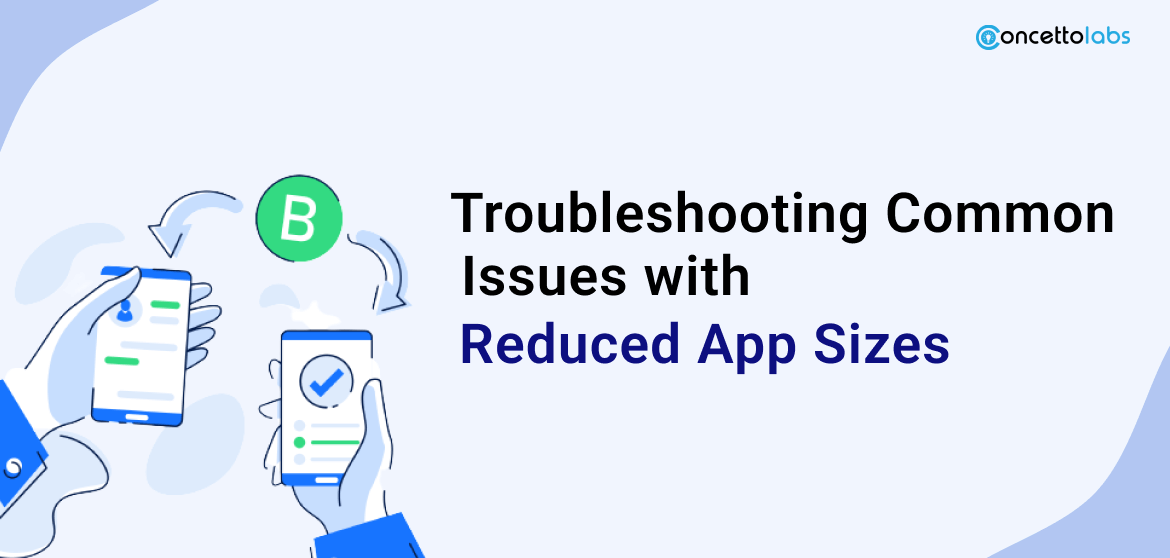
There are a few troubleshooting techniques you can use if your Android smartphone is having problems with reduced app sizes.
First, confirm that your Android operating system is updated to the most recent version. Previous versions might not effectively allow reducing the size of an Android app.
Next, verify that your device has adequate storage to accommodate the smaller app size. If not, you might need to clean some data or uninstall some programmes to make room.
If you’re still having problems, restart your device and give it another go. Rebooting the device can sometimes resolve problems with app size reduction.
Still, having trouble? For assistance, speak with your device’s maker or carrier. They may be able to offer further troubleshooting assistance specific to your device.
Conclusion
Reducing the size of an Android app is essential for its success. A large app size can lead to higher bounce rates, fewer downloads, and lower user engagement. By following the tips discussed in this article, you can significantly reduce the size of your Android app and improve its performance. From minimizing the number of libraries and dependencies to compressing resources and images to splitting the app into multiple APKs, there are several steps you can take to optimize the size of your Android app.
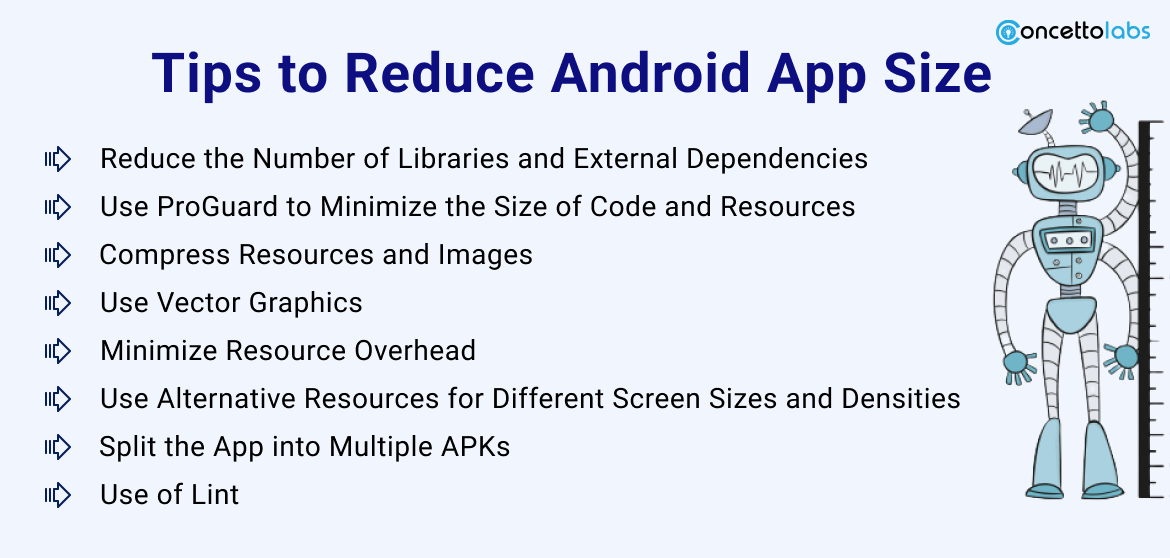

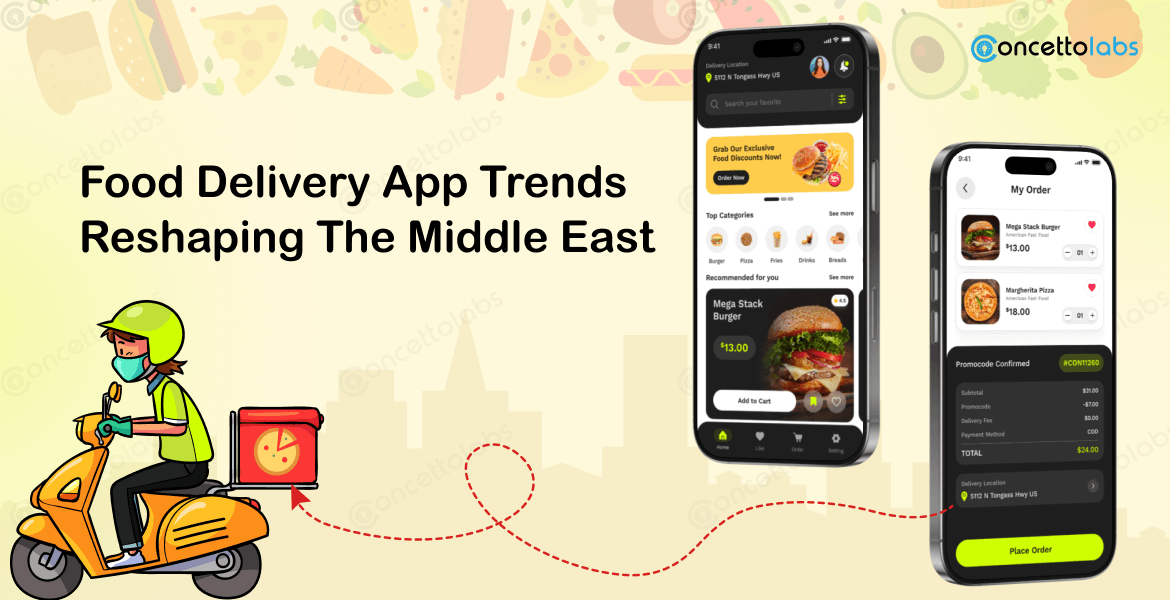




 Indonesia
Indonesia
 Botswana
Botswana
 USA
USA
 Italy
Italy
 Panama
Panama




